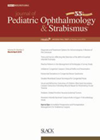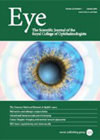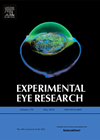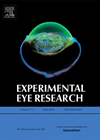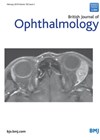You searched for "limbal"
Resurfacing the ocular surface
1 April 2016
| Harminder Dua (Prof)
|
EYE - Cornea
The ocular surface (OS) is an anatomical and functional unit made of the tear film, the conjunctival, limbal and corneal epithelium, the lacrimal, mucous and meibomian glands and the lids and blink reflex. The tear film is composed of a...
MISS vs. conventional surgery
This was a prospective randomised parallel arm design study for 40 patients. Group 1 consisted of conventional strabismus surgery using the limbal approach and group 2 consisted of minimally invasive strabismus surgery (MISS). Mean age was 21.1±2.73 years for MISS...Chemical injury
You are the on-call ophthalmologist. You receive a call from A&E regarding a 45-year-old man who sustained a chemical injury. He was mixing some cement, when a small amount entered his left eye. He was not wearing any protective goggles....Conference Report: ARVO 2025 Annual Meeting
The Association for Research in Vision and Ophthalmology (ARVO) 2025 Annual Meeting was held at the Salt Palace Convention Centre in Salt Lake City, US. This prestigious event brought together experts in vision and ophthalmology from around the world for...Clinical outcomes of AMT in acute ocular chemical injury
1 August 2017
| Jonathan Chan
|
EYE - Cornea, EYE - General
|
Cornea, Inflammation, Ocular surface, Stem Cells, Treatment Surgery
This is a retrospective study of patients from two units in Germany and UK between 1998 and 2008. The ocular chemical burns were classified by Roper-Hall and Dua classifications. A total of 72 eyes of 54 patients aged 37.3 years...
Trabeculectomy ab interno (trabectome)
1 June 2016
| Sofia Rokerya
|
EYE - Glaucoma
This retrospective study examines the outcome of trabectome surgery in nine phakic patients with Posner-Schlossman syndrome with uncontrolled IOP >30mmgHg. Cytomegalovirus (CMV) DNA was verified by polymerase chain reaction (PCR) in aqueous humour samples. Patients were treated with oral valganciclover...
γδ T cell depletion does not affect fungal keratitis
1 August 2015
| Graham Wallace
|
EYE - Cornea, EYE - General
|
CFW, Cytokines, FK, Fungal keratitis, IL-17, Neutrophils, calcofluor WHITE, fungal keratitis, γδ T cells
Fungal keratitis (FK) is a blinding condition prevalent in agricultural areas of countries such as India and China. The fungus enters the cornea and induces an inflammatory response which leads to tissue damage. Neutrophils are the earliest infiltrating immune cells...
MicroRNA inhibits corneal neovascularisation
1 August 2018
| Graham Wallace
|
EYE - Cornea, EYE - General
|
Biomechanical stress, Corneal epithelium, MicroRNA-204, Neovascularization, VEGF, VEGFR2
MicroRNAs (miR) are small non-coding RNA that target mRNA for destruction. MiR target about 30% of the protein coding genes and fine tune their expression. MiR have been shown to be involved in several cellular processes including cell cycle, tissue...
Therapeutic ocular surface medium for persistent corneal epithelial defect
Corneal ulcers and persistent epithelial defects (PEDs) are caused by a variety of different insults to the cornea, which includes limbal epithelial stem cell failure. PED may be resistant to healing with standard therapy such as frequent ointments and /...Erythropoietin in healing corneal epithelial defects in rabbits
Corneal epithelial defects heal slowly in patients with diabetes, limbal stem cell deficiency and severe chemical burns. Erythropoietin is a glycoprotein hormone that promotes red blood cell proliferation and inhibits apoptosis of erythroid progenitors as well as nonhematopoietic cells. In...Van Herick Plus
2 December 2019
| Jonathan Chan
|
EYE - Glaucoma
|
angle, diagnostic tests/investigation, glaucoma incidence
This a consecutive cross-sectional study of 95 phakic patients over the age of 40-years-old. By applying a short, vertical slit beam, the inferior angle at the scleral-limbal junction at 6 o’clock position was evaluated, photographed and assessed by a ratio...

